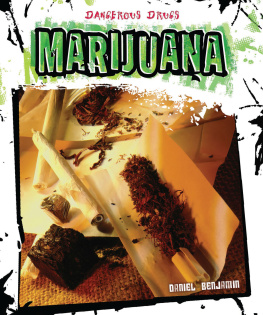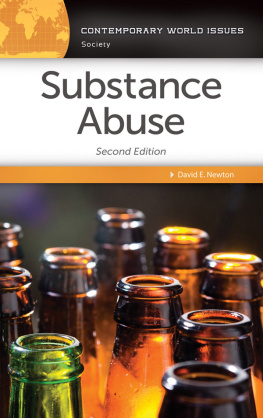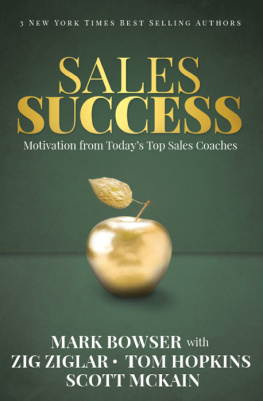Benjamin P. Bowser, Carl O. Word and Toby Seddon 2014
All rights reserved. No reproduction, copy or transmission of this publication may be made without written permission.
No portion of this publication may be reproduced, copied or transmitted save with written permission or in accordance with the provisions of the Copyright, Designs and Patents Act 1988, or under the terms of any licence permitting limited copying issued by the Copyright Licensing Agency, Saffron House, 6-10 Kirby Street, London EC1N 8TS.
Any person who does any unauthorized act in relation to this publication may be liable to criminal prosecution and civil claims for damages. The authors have asserted their rights to be identified as the authors of this work in accordance with the Copyright, Designs and Patents Act 1988.
First published 2014 by
PALGRAVE MACMILLAN
Palgrave Macmillan in the UK is an imprint of Macmillan Publishers Limited, registered in England, company number 785998, of Houndmills, Basingstoke, Hampshire RG21 6XS.
Palgrave Macmillan in the US is a division of St Martins Press LLC, 175 Fifth Avenue, New York, NY 10010.
Palgrave Macmillan is the global academic imprint of the above companies and has companies and representatives throughout the world.
Palgrave and Macmillan are registered trademarks in the United States, the United Kingdom, Europe and other countries
ISBN 978-0-230-30330-0 hardback
ISBN 978-0-230-30331-7 paperback
This book is printed on paper suitable for recycling and made from fully managed and sustained forest sources. Logging, pulping and manufacturing processes are expected to conform to the environmental regulations of the country of origin.
A catalogue record for this book is available from the British Library.
A catalog record for this book is available from the Library of Congress.
Printed in Great Britain by CPI Antony Rowe, Chippenham, England, UK
To the millions who suffer addictions to drugs needlessly
Substance Abuse: A Growing Social Problem
Chapter overview
Introduction to the study of drug abuse
Perspectives and definitions
The role of public policy
The use of science
Multivariate thinking and orientation
Book content and organization
The abuse of prescription and illegal drugs is a worldwide problem. Experts were consulted on trends in substance abuse in their countries (UNDCP 1995). The picture that emerged was quite disturbing. Overall we are losing ground worldwide the number of people seriously addicted to drugs is growing. In the last 30 years the availability of illicit drugs has increased along with awareness of the problem. This growth in availability has been driven by consumption in developed countries, but now drug abuse is becoming a problem in the rest of the world.
When we look at the people behind the problem, they are not anonymous. They are someones brother, sister, mother, father, friend and relative. Furthermore, their drug use and addiction impacts non-users. The general public pays the cost of drug abuse through government taxes used to pay for social services, medical care and treatment. Taxes also pay for drug-related criminal justice expenses. There are insurance and material replacement costs as well. Substance abuse takes its toll on work and can be measured in terms of days of lost work, income and productivity. These costs are then passed on to consumers in higher prices for goods and services.
Drug abuse is a growing problem because drug dealing is immensely profitable (ibid.). The money made from illicit trafficking in cocaine, heroin and cannabis in 2003 was estimated at $320 billion which was then the equivalent of 2 per cent of the global gross domestic product (GDP) (UNODC 2011a). Considering that it cost only $13 billion to produce all the illicit drugs sold that year, and that it cost $94 billion to buy them wholesale (after costs for trafficking), the production and trafficking of illicit drugs are hugely profitable. These enormous profits make it very attractive for new dealers and entrepreneurs to enter the business.
We need to know as much as possible about all aspects of drug abuse so as more effectively to prevent it, treat subsequent addictions, reduce the profitability of trafficking, lower social service and criminal justice costs, and ultimately reverse the increasing scale of it.
Introduction to the study of drug abuse
Let us start with some basics. What are drugs and how can we abuse them? The answers to these questions are hardly straightforward. Consider the following. Cocaine plants have been used in food and as medicine for ages in the highlands of Peru (Karch 2006). Its psychoactive properties are considered dangerous and its non-medical use is banned worldwide. In contrast, cocoa plants grown in the Cte dIvoire provide us with cocoa, a luxury food product and a stimulant similar to cocaine (Dalby 2003). For a time in Europe and the USA, alcoholic beverages were considered dangerous and were banned (Decarie 1990). They are still dangerous but no longer banned. Because of cannabiss psychoactive properties, it too is considered dangerous and is banned; however, it may soon become legal (Room et al. 2010). Then there are betel nuts, ganja and khat. They also have psychoactive properties, but are not universally classified as dangerous or illegal (Gezon 2012). One can get high and form an addiction to all of these drugs. So, why is cocaine dangerous and banned, alcohol dangerous and legal, cocoa not dangerous and not banned, and betel nuts, ganja and khat have no clear classification?
Drug abuse as a social construct
There are no objective and scientific reasons why there are such wide variations in how different psychoactive drugs are classified (Coulson and Caulkins 2012), but there is a way to make sense out of what appear to be arbitrary ascriptions to drugs as dangerous, legal, illegal and even psychoactive: all of these terms can be viewed as social constructs. That is: all knowledge is relative to the person, time, place, language and culture (Gergen 1999). Potentially, any thing and any idea can be described differently and have ascribed to it different meanings. Our actions and habits shape our perceptions, and our perceptions in turn influence our subsequent practices (Gergen 1994). Trace how a substance has been defined and the meanings ascribed to it over time and you will see how we have arrived at such arbitrary views of drugs. If you are looking for absolutes, fixed definitions and unchanging knowledge about drugs, their use and abuse, there are none. From a social constructionist point of view, it is a given that human experiences of drugs and their use differ across time and place (Jordanova 1995).
A social constructionist approach is first of all a perspective that requires taking into account multiple explanations and interpretations of drug use and abuse. It is secondly an analytic tool by which ideological and rhetorical assumptions can be unmasked and by which medical, criminal and scientific concepts can be critically deconstructed (Gergen 1997). By using this approach, we can better understand the phenomenon of drug use and abuse in society and conceive of ways to reduce potentially the personal and social dangers involved. Because it is both a critical perspective and analytic tool, social constructionism is widely used in scientific approaches to health and illness (Lloyd 2000).











